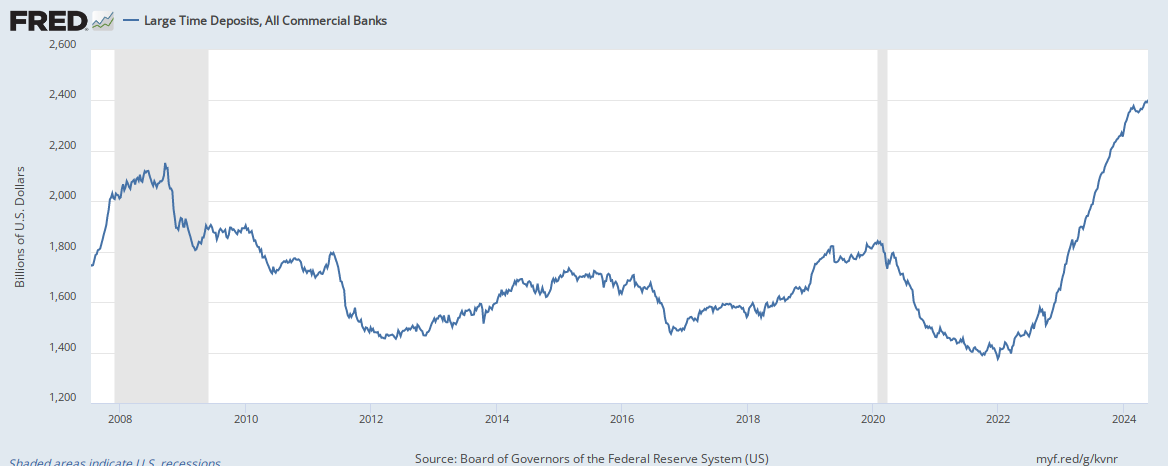Dark Side of The Moon?
Giving Tuesday's With Trump, not to be mistaken for Tuesday's With Morrie, a break this week.
Above, the volume of large time deposits at commercial banks dwindling by 25% since 2007, with a slight rise since Jan 2017.
Above, the Yoy ROC (rate of change or delta) on those large deposits, NOTE going from negative to positive in Q3 2017.
Above, total checkable deposits stagnant since March 2017 with Yoy ROC's declining since late 2016. NOTE the increase 1st half of 2016.
Above, total savings stagnant since March 2017 with Yoy ROC's declining since late 2016.
Increases in ROC (total checkable 1st half 2016 and large deposits Q3 2017) coupled with a declining ROC in total savings, would have increased the ratio of available or spendable cash to savings.
Translated, draw down and transfer of savings to checkable, more spending, generating an increase in transactions velocity.
What could have caused this? Did the economy reach escape velocity? Did somebody get a significant raise in inflation adjusted terms? Is it happy days again?
Well, you can certainly speak to me, breathe easy and paint it any colour you like?
Stay tuned, no flippin, more to come in Dark Side of The Moon? Part 2.
These are the c. seasonal inflection points (they may vary a little from year to year):#1) 3rd week in Jan.#2) mid Mar.#3) May 5,#4) mid Jun.#5) July 21,#6) 2-3 week in Oct. - The Dark Side Of The Moon: The Seasonal ClockFrom the ever prescient Salmo Trutta, we know that the 5th seasonal inflection point usually arrives around July 21st. This year, due to other factors that timing is possibly skewed to August 1st at the latest. Many conflate the terms seasonal and cyclical, to disambiguate....
A seasonal pattern exists when a series is influenced by seasonal factors (e.g., the quarter of the year, the month, or day of the week). Seasonality is always of a FIXED and KNOWN period. Hence, seasonal time series are sometimes called periodic time series.
A cyclic pattern exists when data exhibit rises and falls that are NOT of FIXED period. The duration of these fluctuations is usually of at least 2 years. Think of business cycles which usually last several years, but where the LENGTH of the current cycle is UNKNOWN beforehand. - Hyndsight for examplesRule of thumb, cyclical are usually longer than one year, whereas seasonal usually occur in a already know period of less than one year viz. Summer, Winter, 3rd Quarter, etc.
Above, the volume of large time deposits at commercial banks dwindling by 25% since 2007, with a slight rise since Jan 2017.
Above, the Yoy ROC (rate of change or delta) on those large deposits, NOTE going from negative to positive in Q3 2017.
Above, total checkable deposits stagnant since March 2017 with Yoy ROC's declining since late 2016. NOTE the increase 1st half of 2016.
Above, total savings stagnant since March 2017 with Yoy ROC's declining since late 2016.
Increases in ROC (total checkable 1st half 2016 and large deposits Q3 2017) coupled with a declining ROC in total savings, would have increased the ratio of available or spendable cash to savings.
Translated, draw down and transfer of savings to checkable, more spending, generating an increase in transactions velocity.
What could have caused this? Did the economy reach escape velocity? Did somebody get a significant raise in inflation adjusted terms? Is it happy days again?
Well, you can certainly speak to me, breathe easy and paint it any colour you like?
Stay tuned, no flippin, more to come in Dark Side of The Moon? Part 2.




Comments